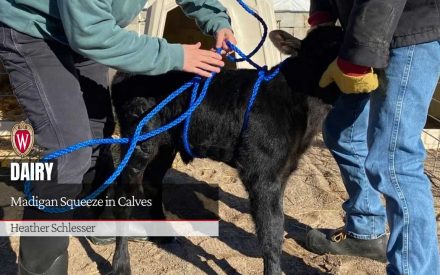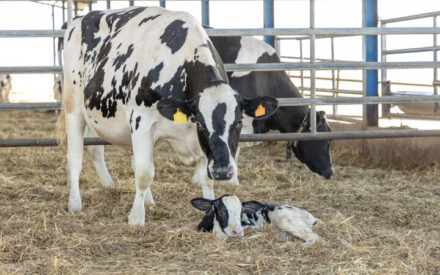Dairy cattle selection programs aim to improve the profitability and sustainability of the dairy industry, either by targeting traits that increase revenue or traits that reduce expenses. Fertility is one of several major trait categories that includes production, longevity, health, calving ability, conformation, and sustainability. Within fertility, four female fertility traits are routinely evaluated in US dairy cattle, including daughter pregnancy rate, considered the primary trait for improving cow fertility, both heifer and cow conception rates, and more recently, early first calving.
Progress
Milk production per cow, per lactation, has steadily increased over the last 60 years. Roughly 60% of that progress is associated with genetic progress, and 40% is credited to advances in management practices. The story is different when tracking fertility over time. As milk production increased, fertility declined until the mid-2000’s. The good news is we stopped the decline and have seen improvements in fertility in the past 10-15 years.
The advent of genomics in the last 15 years has revolutionized dairy cattle breeding, enabling more rapid genetic progress, particularly for traits that have low heritability, such as female fertility traits. In fact, genomics increases the reliability of female fertility traits by 47 to 52% over traditional parent average reliabilities. Genomics has also allowed us to predict breeding values and identify genetically superior animals at a younger age. Genomic selection contributed to stop the decline in dairy cow fertility, and genomic merits for female fertility traits are slowly but steadily improving.
How are we evaluating female fertility?
Daughter Pregnancy Rate (DPR) (since 2003)
- Percent of nonpregnant cows that become pregnant during a given 21-day period. Reflects a cow’s genetic ability to conceive soon after calving.
Heifer Conception Rate (HCR) (since 2009)
- Percent of inseminated heifers that become pregnant at each service. Reflects a heifer’s ability to conceive.
Cow Conception Rate (CCR) (since 2009)
- Percent of inseminated cows that become pregnant at each service. Reflects a cow’s ability to conceive.
Early First Calving (EFC) (since 2019)
- Age at first calving. Reflects a heifer’s ability to calve earlier.
Challenges
While fertility traits are important, we need to recognize they are low heritable traits, around 1-2% for heifer and cow conception rates, and around 4% for daughter pregnancy rate. Our current measures of fertility are still distant from the cows reproductive physiology and are greatly impacted by management practices. Fertility traits are included in most major selection indices, such as $ Net Merit, but with relatively low weight around 6.5%.
Recent findings suggest a potential interaction between cow’s genetics and reproductive management, specifically changes to sire’s PTA rankings when fertility data is based on timed AI records or heat detection records. Therefore, genetic evaluations should perhaps consider data from timed AI and heat detection as different traits. This would require a better, more standardized system for recording breeding information. Moreover, inbreeding is increasing faster than in the past, and its potential impact on cow fertility in the long run deserves more attention.
Perspectives
Genomics facilitates the selection for novel traits that are important, but too difficult or expensive to measure on the entire population. Once such novel trait being utilized in the dairy industry is the dairy cow feed efficiency. Genomics could allow the selection for new fertility traits that more closely describe cows’ reproductive physiology, such as anti-Müllerian hormone or progesterone concentration, or even estrus expression.
Early data shows estrus expression traits are highly heritable, with estrus duration around 8-10%, and estrus strength around 10-15%. Estrus expression traits appear to be repeatable, therefore requiring a limited number of records per individual to generate sufficient data. Adoption of on farm technology, such as activity and rumination monitoring systems, may make these measurements a reality in the near future. Fetal loss is another heritable trait under investigation for potential inclusion into future genetic selection tools.
Download Article

 Madigan Squeeze in Calves
Madigan Squeeze in Calves Activity Monitoring Technology for Reproductive Management of Dairy Cows
Activity Monitoring Technology for Reproductive Management of Dairy Cows ▶️ Watch: Higher Fertility Success for Wisconsin Dairy Farmers: Panel Discussion
▶️ Watch: Higher Fertility Success for Wisconsin Dairy Farmers: Panel Discussion A Base Change for Bull Proofs is Coming… in April 2025
A Base Change for Bull Proofs is Coming… in April 2025


